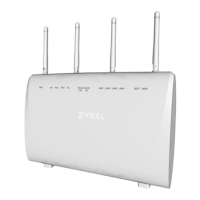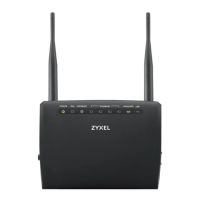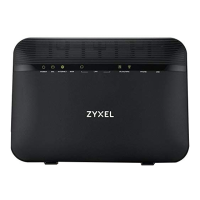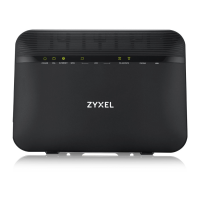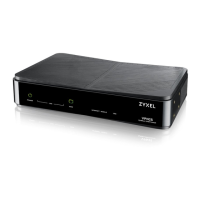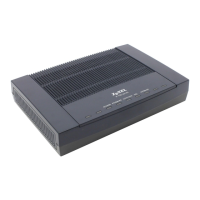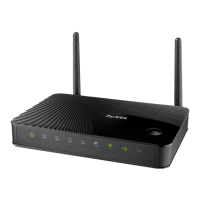Chapter 11 Network Address Translation (NAT)
VMG3925-B10C/B30C User’s Guide
185
network and make them accessible to the outside world. If you do not define any servers (for Many-to-
One and Many-to-Many Overload mapping), NAT offers the additional benefit of firewall protection.
With no servers defined, your VMG filters out all incoming inquiries, thus preventing intruders from probing
your network. For more information on IP address translation, refer to RFC 1631, The IP Network Address
Translator (NAT).
11.9.3 How NAT Works
Each packet has two addresses – a source address and a destination address. For outgoing packets,
the ILA (Inside Local Address) is the source address on the LAN, and the IGA (Inside Global Address) is
the source address on the WAN. For incoming packets, the ILA is the destination address on the LAN,
and the IGA is the destination address on the WAN. NAT maps private (local) IP addresses to globally
unique ones required for communication with hosts on other networks. It replaces the original IP source
address (and TCP or UDP source port numbers for Many-to-One and Many-to-Many Overload NAT
mapping) in each packet and then forwards it to the Internet. The VMG keeps track of the original
addresses and port numbers so incoming reply packets can have their original values restored. The
following figure illustrates this.
Figure 90 How NAT Works
11.9.4 NAT Application
The following figure illustrates a possible NAT application, where three inside LANs (logical LANs using IP
alias) behind the VMG can communicate with three distinct WAN networks.
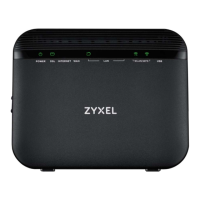
